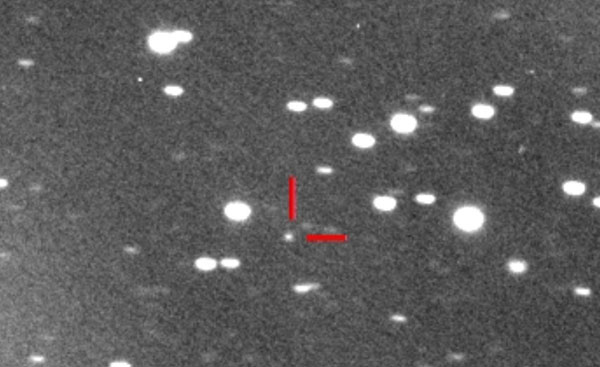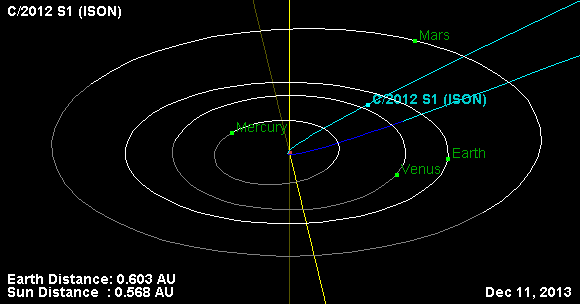ISON is a comet that passes very close to the Sun. Some comets that passes close to the Sun, usually gets evaporated but large comets survive the close approach to the Sun.
ISON is such a sun grazing comet discovered recently by Vitali Nevski and Artyom Novichonok using 0.4 metre reflector of International Scientific Optical Network near Kislovodsk, Russia through asteroids discovery program.
Image as on 22 September 2012 on a 0.25m reflector at Remanzacco Observatory
Minor Planet Center operating at Smithsonian Astrophysical Observatory announced the discovery on September 24th. Under the International Astronomical Union, Minor Planet Center is responsible for collecting and publishing data about asteroids and comets.
According to the data, comet C/2012 S1 (i.e) ISON will be at its closes approach to the Sun on November 28, 2013 at a distance of 0.012 AU (1,800,000 km from the center of Sun).
The comet will have a closest approach to Earth on December 26 2013 at a distance of 0.42 AU (63,000,000 km). The ISON’s orbit is nearly parabolic and similar to the Great Comet of 1680. The data suggests that both the comets might come from a same source.
During the discovery, the comet was far and negligible to be seen by human eye. The brightness of the comet will increase as it approaches towards the Sun and Earth. By August 2013, the comet will become visible to small telescopes.
It will become visible to naked eye by late October of November 2013 until January 2014. It will be difficult to see due to the Sun’s glare when the comet is very near to the Sun (perihelion) on 28 November 2013,
If the comet survives the Sun and reaches the negative magnitude, it might even get extremely brighter than the full Moon. Its brightness might get affected by the forward scattering of light as it passes close to the Sun.
The comet is named C/2012 S1 as well as “ISON” (International Scientific Optical Network) to identify the organization which discovered the comet.
Related Posts:

